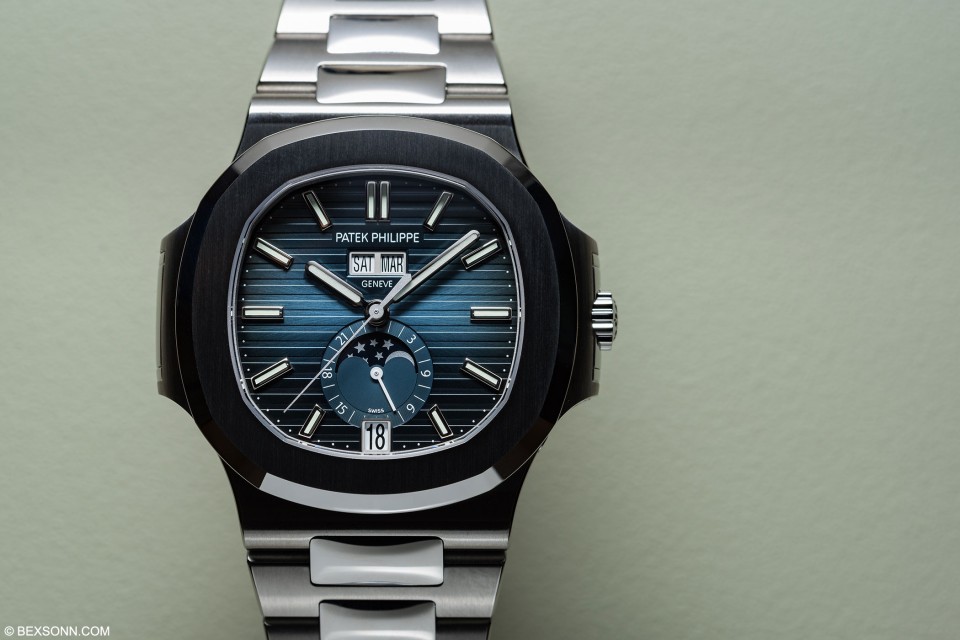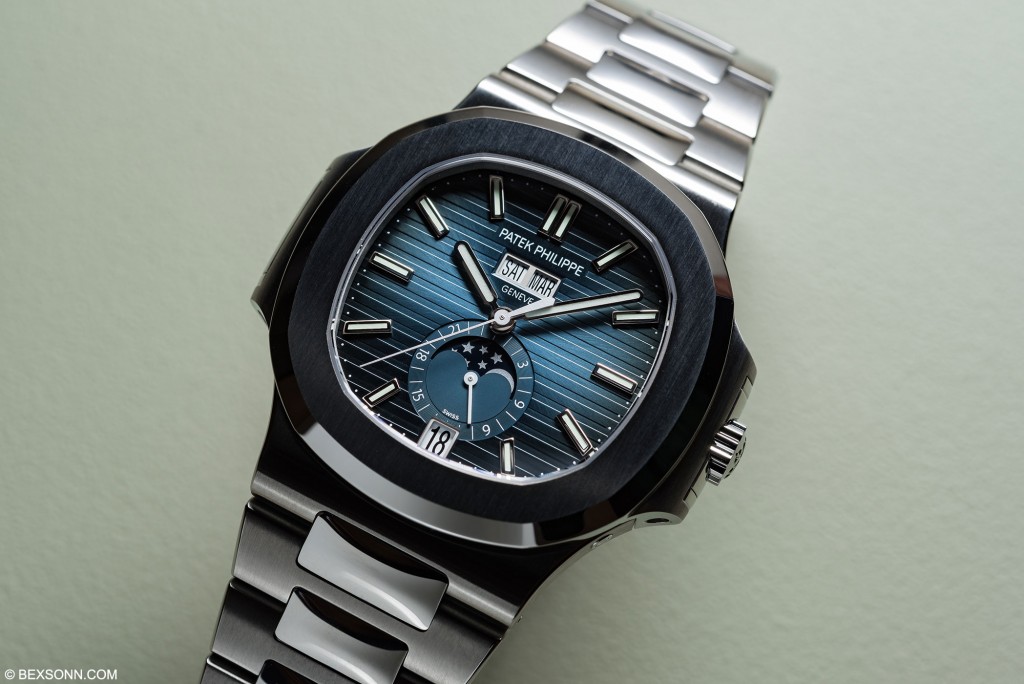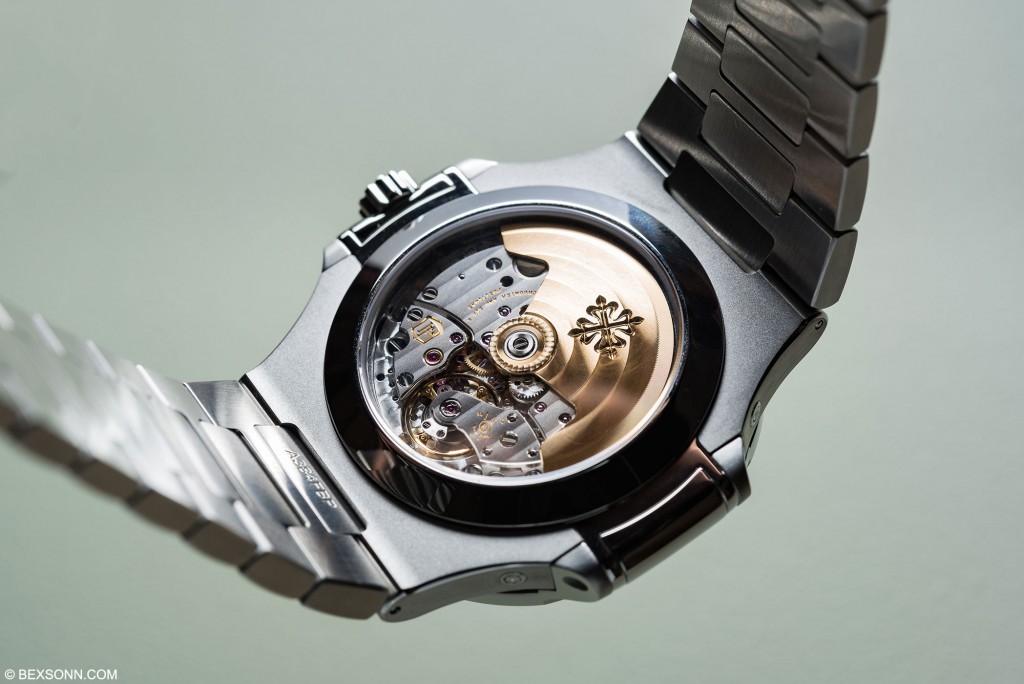It has been another big year for the ultra-luxury sport watch in general. At the beginning of the year was AP’s Royal Oak in white gold with a pink-gold (not salmon) dial, then a new green dial Aquanaut from Patek themselves and then there was this – while not entirely new – Nautilus Annual Calendar 5726/1A (the ‘1A’ denoting it comes on a full steel bracelet). Patek Philippe has made the Nautilus in a myriad of configurations, from chronographs to annual calendars to moon phases and for the first time last year, the manufacture included a ‘Grande Complication’ in the name of a perpetual calendar.
In 2010, Patek Philippe married sporting spirit and technical sophistication in a Nautilus watch that also featured an Annual Calendar, a moon-phase display and a 24-hour indicator. The steel ref. 5726A on a leather strap has since been joined by others with a steel bracelet (it is important to note that pieces introduced with a steel bracelet with white or black gradient dials are now be discontinued).
This year Patek introduced a reinterpreted variation of said pieces on a steel bracelet and fitted it with a striking blue dial (the colour on the original Nautilus model of 1976), which I think is more befitting of the Nautilus. The horizontal embossing and the subtle shading from blue to black at the dial’s edge create a powerful but refined decor that complements the steel case. The hours and minutes are indicated with applied white-gold hour markers and hands highlighted with a luminescent coating, accompanied by a slender sweep seconds hand.
Housed in a 40.5mm stainless steel case and at 11.5mm thick, the 5726/1A is a rather snug affair which won’t cause any issue should you wish to tuck it beneath your sleeve. Being a Nautilus, it is water-resistant to 120 metres with a case that features a combination of satin brushed and polished facets, on a steel bracelet with fold-over clasp also boasting a pronounced contrast between polished and satin finishes.
The 5726/1A is powered by a classic and historically important Patek Philippe movement, the calibre 324 S QA LU 24H/303. Patented by Patek Philippe in 1996, the movement displays the day and the month in two in-line apertures at 12 o’clock and the date in an aperture at 6 o’clock. Thanks to this ingenious mechanism, which takes account of months of 30 and 31 days, the date requires correction only once a year, on March 1st. The 24-hour indicator in the lower half of the dial simplifies calendar adjustments. This subsidiary dial also houses the extremely precise moon-phase display, which requires correction by one day every 122 years.

It is interesting to think that the very point of both the Nautilus and the Royal Oak when it was first released was championing stainless steel, a seemingly pedestrian metal, as something precious and pricing it at the same level as a gold watch. Before it became the cult watch it is today, people thought it made no sense at all and the models struggled in sales. Somehow though, along the way in some strange twist of both Veblenist thinking and a consumer culture driven by rarity, stainless steel has now become the king of metals.
Fast forward to 2019, this new trend of both Audemars Piguet and Patek Philippe including insanely complicated movements usually reserved for dressier watches in their sports models makes absolutely no sense. And in making no sense at all, in the true spirit of Gerald Genta and his Royal Oak and Nautilus creations, it makes perfect sense.
The Patek Philippe Nautilus ref. 5726/1A is priced at £35,160. For more information visit the official Patek Philippe website.





